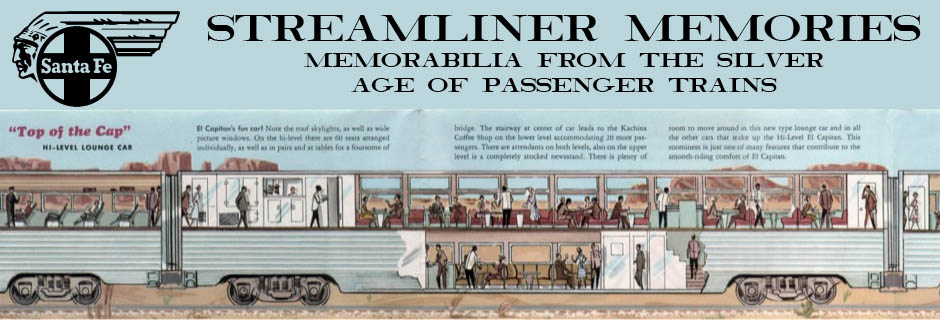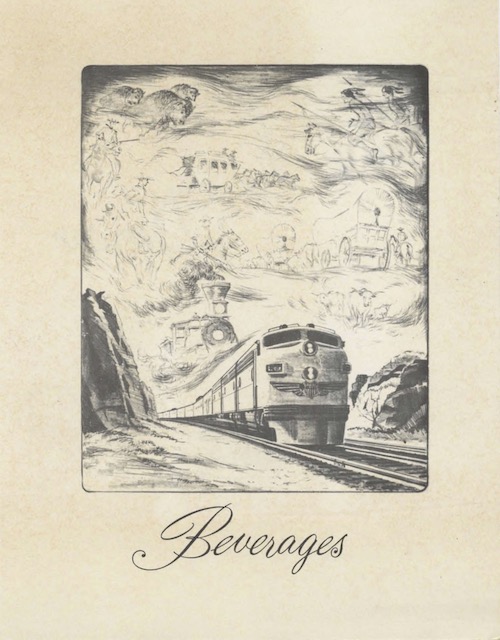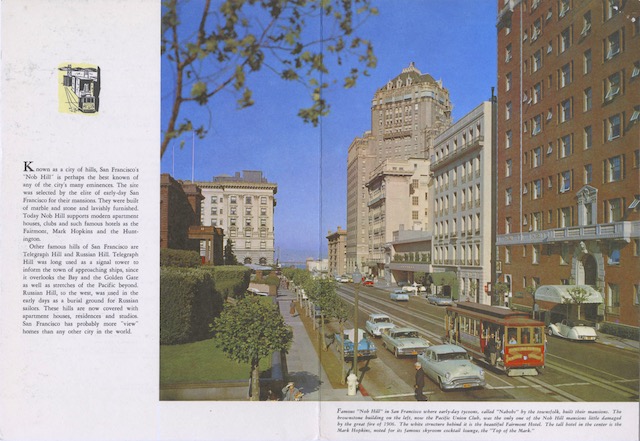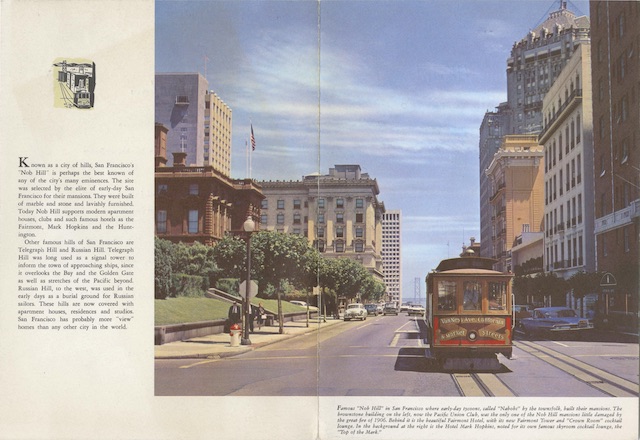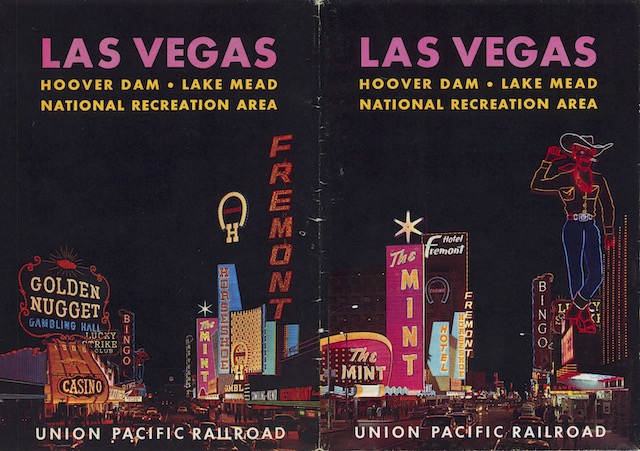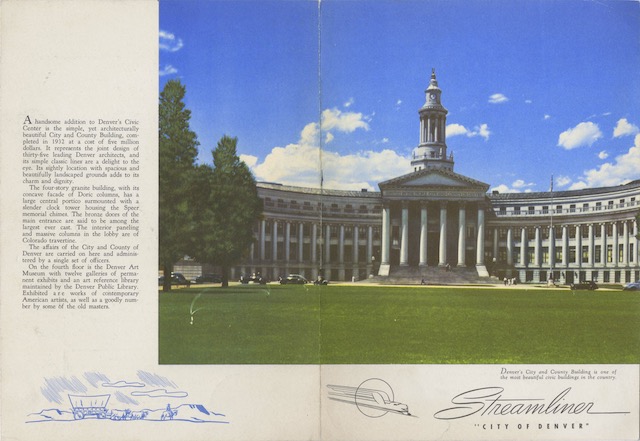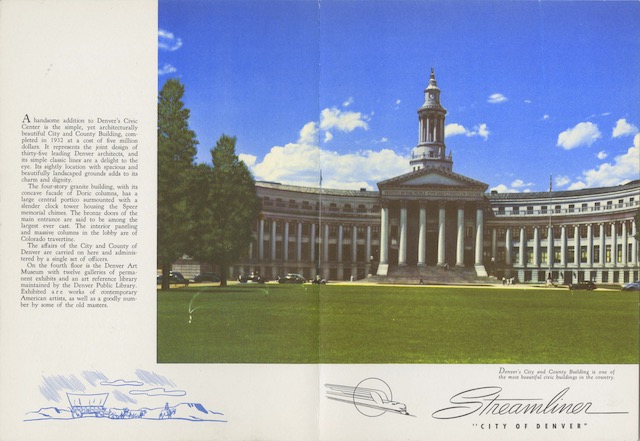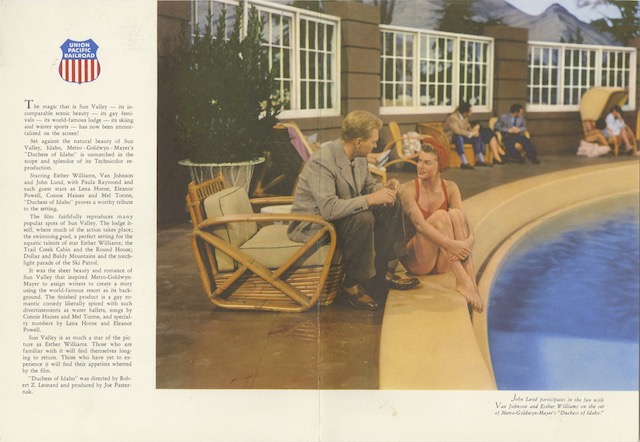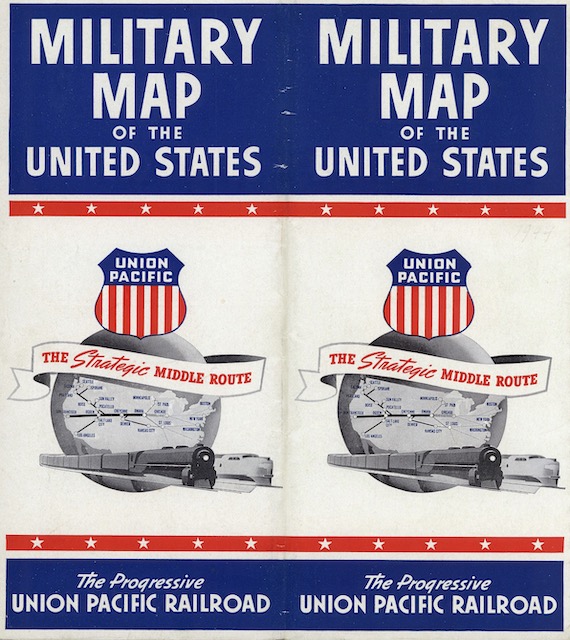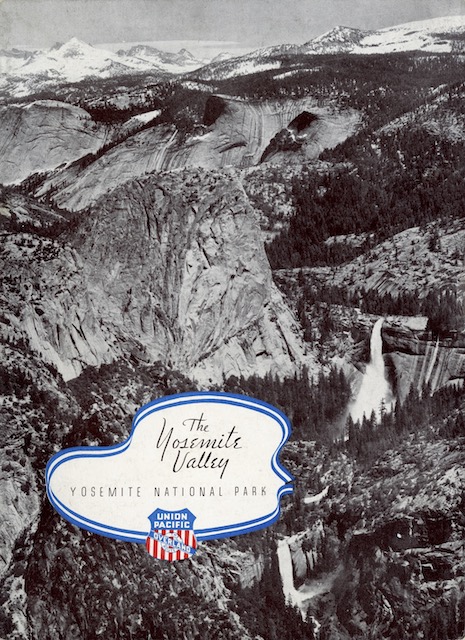Yes, Virginia, there was a Union Pacific train called the City of Kansas City. It replaced the City of St. Louis in June, 1968, when the Wabash decided not to operate that train on the St. Louis-Kansas City portion of the route. Instead, it changed the schedule to better fit the needs of Missouri travelers, which didn’t connect with the UP train to the coast. Ironically, Wabash had its own City of Kansas City, but it was a day train and UP needed an overnight train from St. Louis to meet with its train in Kansas City.
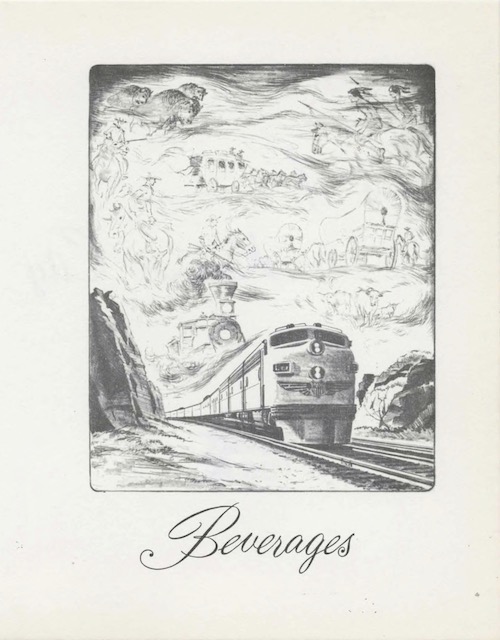 Click image to download a 451-KB PDF of this menu.
Click image to download a 451-KB PDF of this menu.
This was the “city of everywhere” era, so UP’s City of Kansas City only went from Kansas City to Cheyenne, where it met the City of Los Angeles, which itself had split from the City of Denver at Julesburg, Nebraska and would again split from the City of Portland at Green River, Wyoming and the City of San Francisco at Salt Lake City. The City of Kansas City had through coaches and sleepers to Los Angeles, Portland, and San Francisco, which made for some complicated switching operations in Cheyenne, Green River, and Salt Lake City. Although the City of St. Louis had a dome coach from St. Louis to Los Angeles, the City of Kansas City didn’t have any dome cars east of Cheyenne. Continue reading
